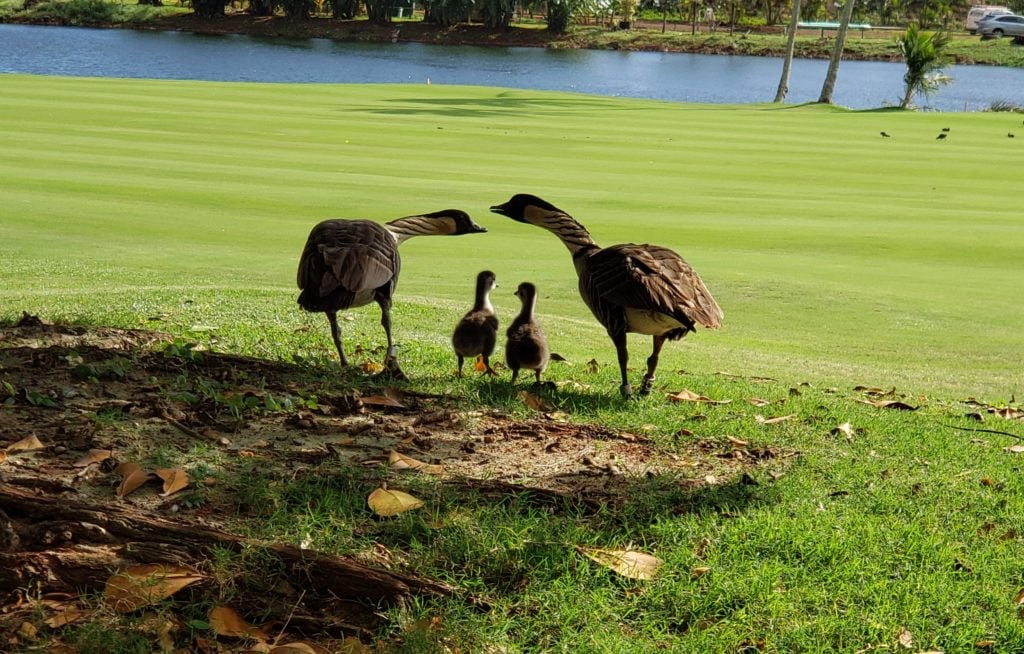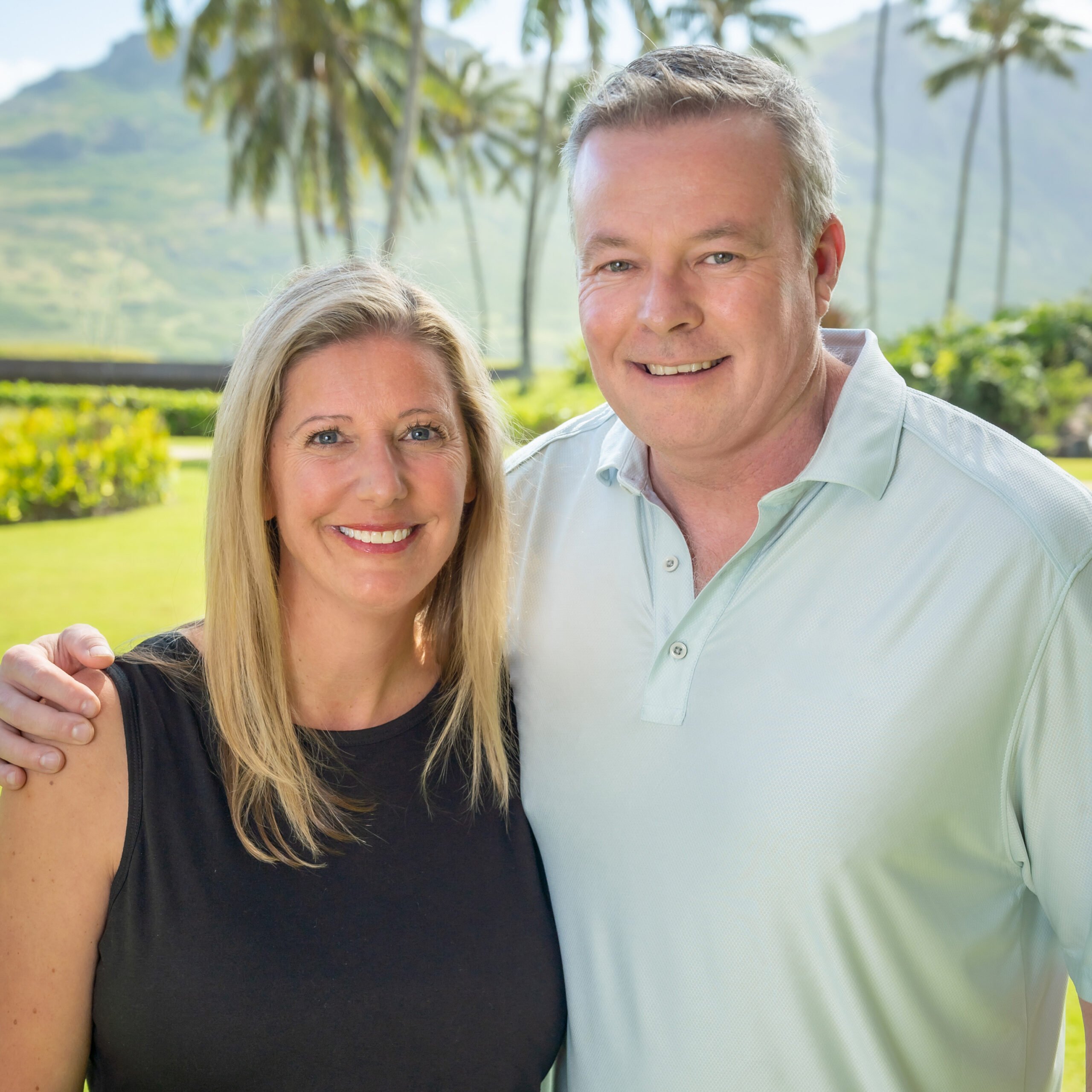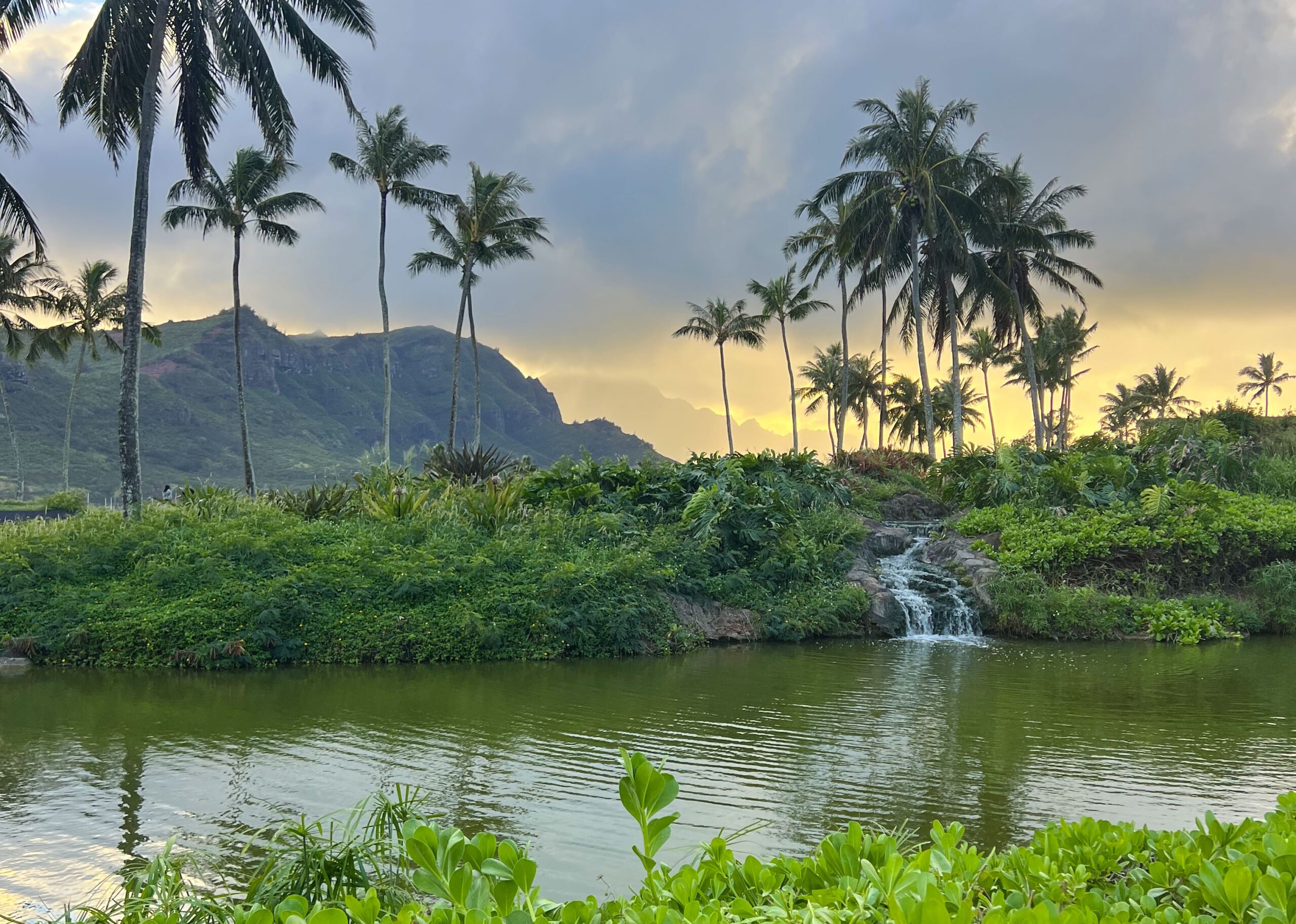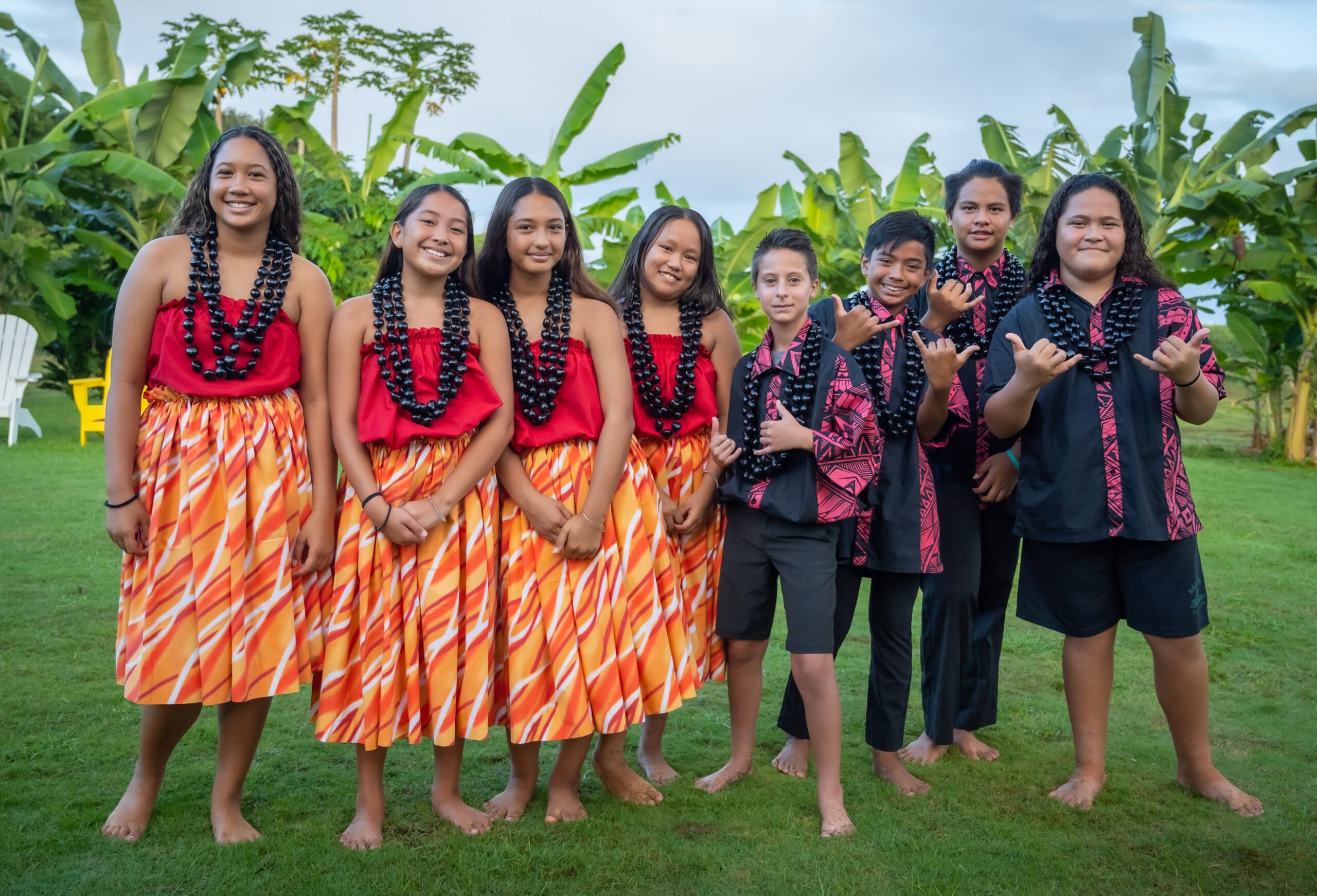Nēnē Nesting Season
November 22, 2023
Our newsletter contained an incorrect link to this blog! Please click here to view Maliulā 2405.
Hawaiʻi ’s state bird, the world’s rarest goose and once near extinction, is thriving at Hōkūala as we enter nesting season for the nēnē.

History of the Nēnē
The nēnē, or Hawaiian goose, is endemic to and only found in Hawaiʻi. These birds are believed to be a genetic subset of common Canadian geese, settling and evolving amongst the islands over 500,000 years ago during the formation of Hawai‘i. The occupation of the islands in the late 18th century by new settlers brought fresh dangers to the nēnē. Hunting, introduced predators, and habitat loss combined to dwindle the population to the brink of extinction, with just 30 birds left by 1952.
Thanks to conservation efforts, new federal law, and captive-breeding programs, the nēnē have made a comeback and successfully returned to the wild. Nēnē are still the sixth-most endangered waterfowl species in the world and the rarest goose, endemic only to Hawai‘i with approximately 63% of the population found on Kaua‘i.
Beloved in Hawaiʻi, the sacred nēnē goose is mentioned in Hawaiian creation chants, regarded as a guardian of the land, and a spiritual connection between mauka and makai.

Nesting Season
Hōkūala’s grounds provide the perfect sanctuary for endangered birds. Nēnē’s thrive in our lagoons and bountiful landscape, with plentiful nesting areas, safe for raising goslings with limited predators and an onsite Naturalist to monitor and keep them safe. As a result, we have the opportunity to witness nēnē nesting season, along with all phases of their lives. Mating for life, the nēnē breed from October through January, with peak nesting season during the winter.
Nēnē nests, comprised of down feathers and plant material, are built in a shallow scrape under thick vegetation to protect the eggs from predators. Most geese lay typically 2-4 eggs per season, between November and January. If you see a female goose (identified by their smaller size) being guarded by their male counterpart, it is most likely the incubation period, which lasts roughly a month. Once hatched, the goslings follow their parents’ lead to locate grass, seeds, and other plants to eat.
Please note that our Naturalist and Bird Specialist captured this image for documentation purposes as part of his position in reporting to the state. It is shared for educational purposes—do not approach nēnē nests on your own, disturb, or harass nēnēs as it is a federal offense.

Keep in Mind While Near Nēnē
Give Them Space
When you see these federally protected birds, keep your distance at a minimum of fifty feet. It is against the law to touch or harass nēnē. Those who are convicted of harassing, or worse, hunting, nēnē have faced fines from $4,000 – $50,000 in addition to jail time.
Keep Your Dogs Leashed
Nesting areas are usually tucked into the vegetation, but if you do happen to be taking your canine friend on a walk, be sure to keep them from sniffing too far into the bushes to keep the growing goslings safe.
Keep Your Eyes on the Road
In high nēnē-traffic areas like Hōkūala or the Kīlauea Point National Wildlife Refuge, be sure to drive with caution to avoid hitting a crossing goose. Nēnēs are fiercely protected by federal law—drivers can be fined up to $5,000 for fatally injuring a Hawaiian goose. Each bird is identifiable by a band on their foot to help keep track of species preservation efforts as well.
Do Not Feed Them
It’s essential not to offer the nēnē human food. They are excellent foragers and natural herbivores, so disrupting their diet with foods not found in their natural habitat can cause serious health risks.


Learn More
To learn more about nēnē preservation and the natural landscapes of Hōkūala, check out our Wildlife & Birdwatching Tour with our onsite Naturalist and Bird Specialist, Alan Silva.
As of November 2023, the Wildlife & Birdwatching Tour is complimentary to Timbers Kaua‘i Owners and a small fee to any guests to our resort.







